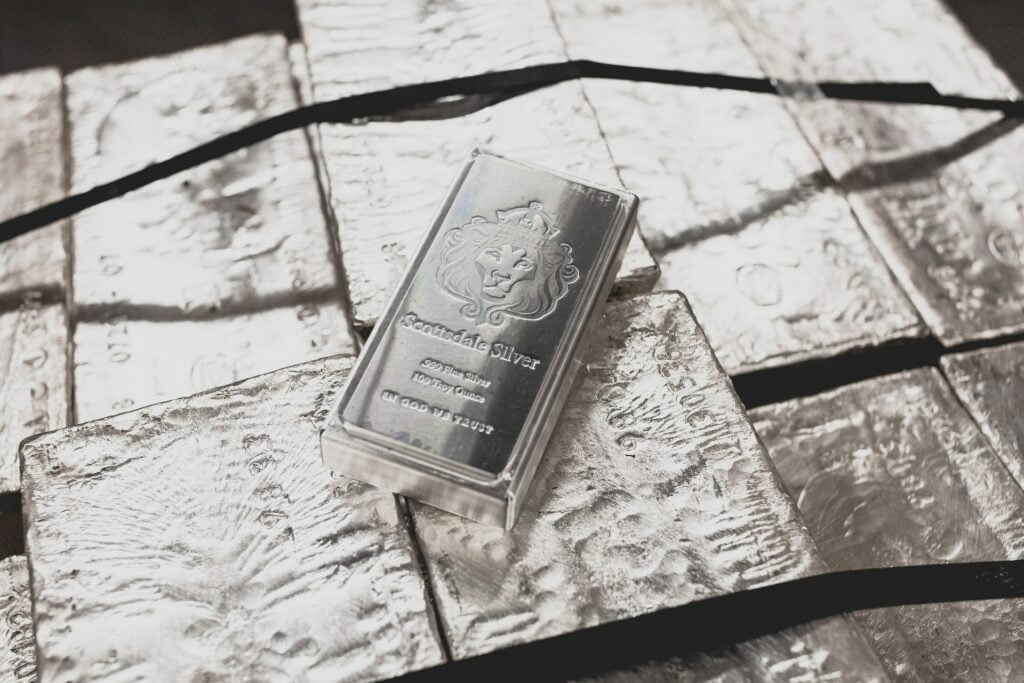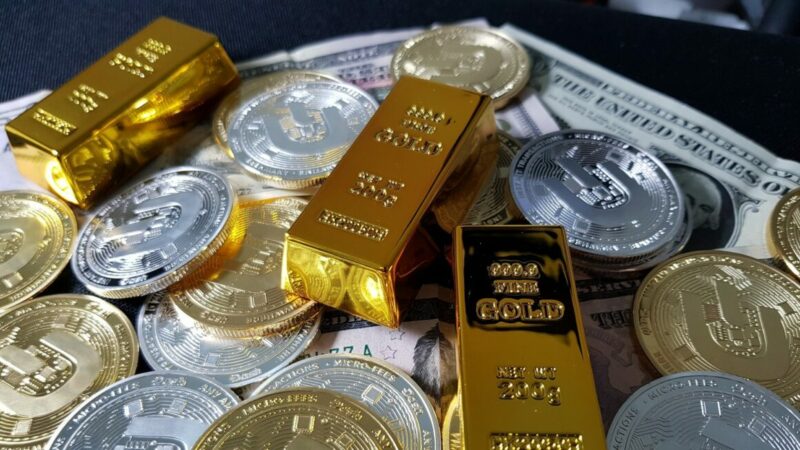I. Introduction
A. Definition of Physical Gold and Silver
Physical gold and silver refer to the tangible form of these precious metals, which can be held in the form of bars, coins, or other physical objects. They have been used as a store of value and a medium of exchange for thousands of years, and are still highly valued today for their scarcity and beauty.
B. Background information on gold and silver as a commodity
Gold and silver have been prized by civilizations for centuries, both as a store of value and a medium of exchange. Historically, they have served as a currency, and even today they continue to be used as a hedge against inflation and a store of wealth. Despite their long history, gold and silver are still widely traded and are a significant part of the global economy.
C. Purpose of the article
The purpose of this article is to examine the use case of digitizing physical gold and silver. Digitization refers to the process of converting physical assets into digital form, making them easier to access, trade, and manage. In recent years, technology has made it possible to digitize gold and silver, and this has created a range of new opportunities for investors and traders. The article will explore the advantages and challenges of digitizing physical gold and silver, as well as some of the key use cases and applications.
This article was promoted by REPLI GOLD who are a 20 year old European company, with a strategy similar to replicating gold, silver, and other precious metals. Imagine buying 1 kilogram of gold, and after a few years, you own 2 kilograms without any additional investment.

II. Advantages of Digitizing Physical Gold and Silver
A. Convenience
Easy access to gold and silver anywhere, anytime
Digitizing physical gold and silver provides investors with easy access to their assets from anywhere in the world, at any time. This eliminates the need to store physical gold and silver in a secure location and makes it easier for investors to manage their assets on the go.
No need to store physical gold and silver in a secure location
When gold and silver are digitized, they can be stored in a secure digital wallet, rather than in a physical safe or storage facility. This eliminates the need for expensive storage solutions and the risks associated with storing physical assets.
B. Liquidity
Faster and more efficient transactions
Digitizing gold and silver makes transactions faster and more efficient. Digital assets can be traded instantly, compared to traditional methods which may take several days. This increased efficiency is particularly beneficial for traders who need to respond quickly to market conditions.
Lower transaction fees
Because digitized gold and silver can be traded instantly, there are lower transaction fees compared to traditional methods. This can result in significant cost savings for investors, especially for those who trade frequently.
C. Increased Transparency
Real-time tracking of ownership and transaction history
Digitizing gold and silver provide real-time tracking of ownership and transaction history. This level of transparency makes it easier for investors to monitor their assets and track the value of their investments.
Improved market information and price discovery
Digitizing physical gold and silver can also improve market information and price discovery. This is because the increased transparency of digital assets provides a more accurate picture of market conditions, which can help investors make informed decisions.
D. Enhanced Security
Protection against theft and fraud
Digitizing physical gold and silver provides enhanced security compared to traditional methods. Digital assets are stored in secure digital wallets, and transactions are secured through the use of encryption and other security protocols. This protects against theft and fraud and ensures that investors’ assets are secure.
Improved dispute resolution and fraud detection
The transparency of digital assets also makes it easier to detect and resolve disputes and fraud. This is because the digital ledger of transactions provides a clear and accurate record of all transactions, which can be used to resolve disputes and detect fraudulent activity.

III. Use Cases of Digitizing Physical Gold and Silver
A. Investment
Alternative to traditional investments
Digitizing physical gold and silver provides investors with an alternative to traditional investments, such as stocks, bonds, and real estate. This offers investors greater diversity in their investment portfolios and can help to mitigate risk.
Access to a wider range of investment products
Digitization also provides investors with access to a wider range of investment products. For example, gold and silver ETFs, futures, and options can be traded on financial markets, providing investors with new investment opportunities.
B. Trading and Hedging
Trading of gold and silver on financial markets
Digitization makes it possible to trade gold and silver on financial markets, which can provide investors with new opportunities to profit from price fluctuations. This can be especially beneficial for traders who need to respond quickly to market conditions.
Hedging against price fluctuations
Digitizing physical gold and silver can also be used as a tool for hedging against price fluctuations. This is particularly useful for investors who want to protect their assets from price volatility and can help to mitigate risk in the portfolio.
C. Payments and Remittances
Use of gold and silver as a means of payment
Digitizing gold and silver provides a new means of payment, which can be used for both domestic and international transactions. This offers a new level of convenience for consumers and businesses and can help to increase financial inclusion.
Cross-border remittances using gold and silver
Digitizing gold and silver can also be used for cross-border remittances, which can provide a more secure and efficient alternative to traditional methods. This can be especially beneficial for migrant workers and other individuals who need to send money across borders.
D. E-commerce and Online Transactions
Use of gold and silver for online transactions
Digitizing physical gold and silver can be used for online transactions, which can provide a more secure and convenient alternative to traditional payment methods. This can be especially beneficial for consumers and businesses who conduct a significant amount of online transactions.
Integration with e-commerce platforms
Digitizing gold and silver can also be integrated with e-commerce platforms, which can help to increase adoption and provide a more seamless shopping experience. This can be especially beneficial for consumers and businesses who want to use gold and silver as a means of payment for online transactions.

IV. Challenges in Digitizing Physical Gold and Silver
A. Regulation
Lack of clear regulatory framework
One of the biggest challenges in digitizing physical gold and silver is the lack of a clear regulatory framework. This can create uncertainty for businesses and consumers, and can also limit the growth and adoption of digital assets.
Challenges in ensuring compliance with anti-money laundering and countering the financing of terrorism (AML/CFT) regulations.
Digitizing gold and silver also presents challenges in ensuring compliance with anti-money laundering and countering the financing of terrorism (AML/CFT) regulations. This is particularly important in preventing the use of digital assets for illegal activities.
B. Technical Challenges
Ensuring the security and integrity of digital assets
Another challenge in digitizing physical gold and silver is ensuring the security and integrity of digital assets. This is particularly important in protecting against hacking and theft, which can result in significant financial losses.
Integration with existing financial systems
Digitizing gold and silver also presents challenges in integrating with existing financial systems. This can make it difficult for businesses and consumers to use digital assets, and can also limit the adoption of digital assets.
C. Public Awareness and Adoption
A lack of awareness about the benefits of digitizing physical gold and silver is another challenge. This can result in low adoption and a limited understanding of the potential of digital assets.
Resistance to change and adoption of new technology is also a challenge in digitizing physical gold and silver. This can be especially true for older generations who may be less familiar with digital assets and may be hesitant to use them.

V. Conclusion
A. Recap of the main points
In this article, we discussed the use case of digitizing physical gold and silver. We covered the advantages of digitizing gold and silver, including convenience, liquidity, increased transparency, and enhanced security. We also discussed the use cases of digitizing gold and silver, including investment, trading and hedging, payments and remittances, and e-commerce and online transactions. Finally, we discussed the challenges in digitizing gold and silver, including regulation, technical challenges, and public awareness and adoption.
B. Future outlook for digitizing physical gold and silver
The future outlook for digitizing physical gold and silver is promising. As technology continues to advance and the regulatory framework for digital assets becomes more clear, it is likely that the use of digital assets will become more widespread. This will likely result in greater accessibility and adoption of digital assets, and will also drive innovation in the use of digital assets for various purposes.
C. Final thoughts and recommendations
In conclusion, digitizing physical gold and silver has the potential to bring many benefits to businesses and consumers. However, there are also significant challenges that need to be addressed, including regulation, technical challenges, and public awareness and adoption. It is important to continue to monitor the development of digital assets and to work towards addressing these challenges in order to realize the full potential of digitizing gold and silver.
For businesses and consumers considering the use of digital assets, it is recommended to conduct thorough research and due diligence and to seek the advice of financial and legal professionals as needed. By doing so, they can make informed decisions about the use of digital assets and can take advantage of the many benefits that digitizing gold and silver has to offer.
